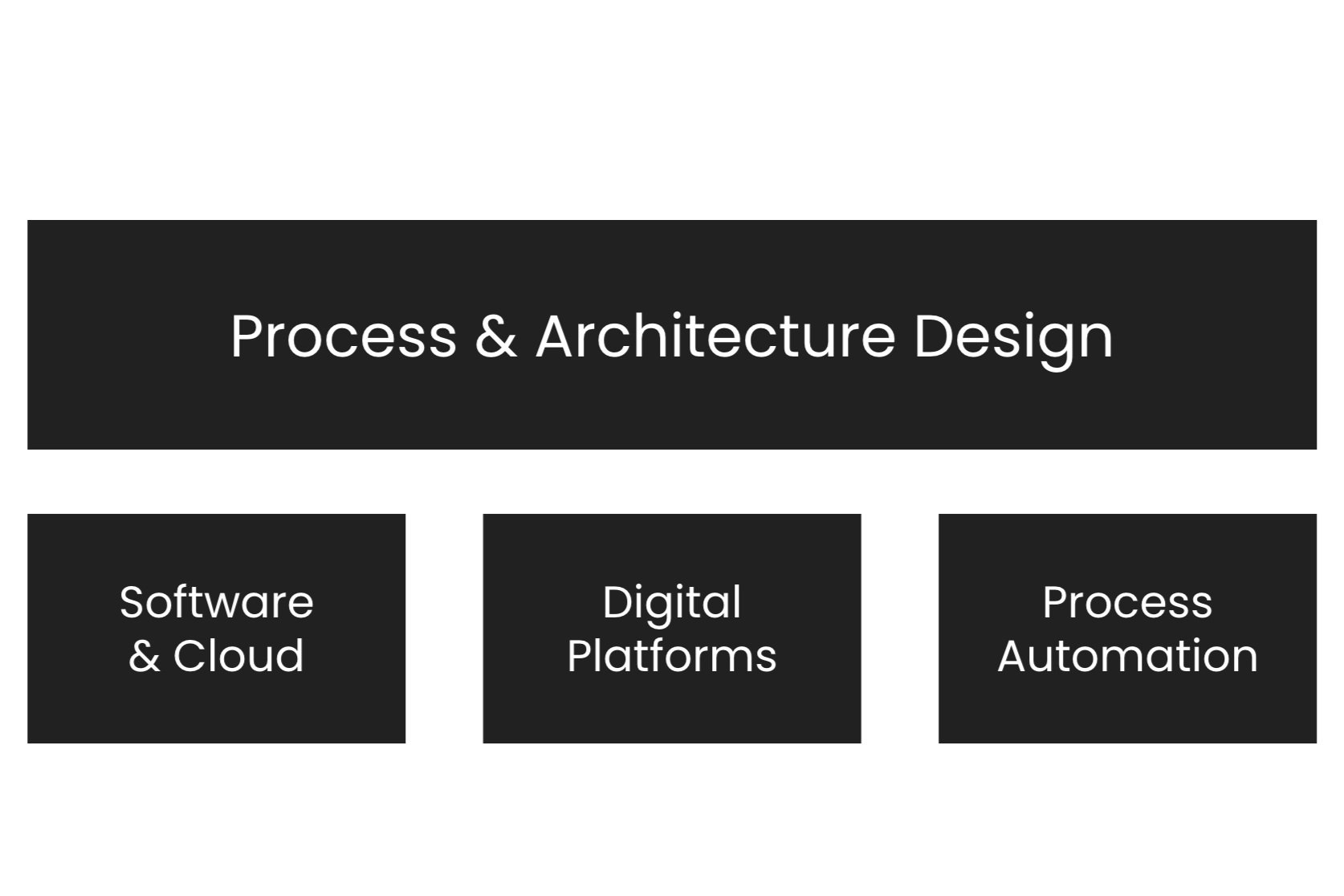A year in review – what did we learn about digital efficiency?
It is time to wrap up the first full year in business for Vuono Group – and what a year it has been!
We are extremely proud to be the newest and fastest growing company in the Futurice Ecosystem, applying all the experience of previous years in our growth story. In addition, Futurice Ecosystem gives our customers the access to 800+ experts, guaranteeing success in any problem that needs to be solved.
Now is a good time to reflect on the year that passed. Here’s what we have learnt about digital efficiency – and what you should know, too.
1. Our original hypothesis about digital efficiency was right
Already in the very early days of Vuono Group, we had a strong hypothesis that digital efficiency is built on a number of different areas. We identified software development, digital platforms (e.g. ERPs) and process automation tools, as the main areas of digital efficiency.
Now, after talking to hundreds of Finnish organisations and developing their digital efficiency, we can safely say that our original hypothesis was correct.
Our way of viewing digital efficiency means that there is not a one-size-fits-all solution to fix all efficiency problems. It is always about the end goal: what are we trying to achieve? Only after that can we define the best means to get there.
To best support our customers’ needs, we have some excellent partners that bring in valuable subject matter expertise and technical know-how. For example, sourcing experience from Zeal Sourcing and Microsoft Business Central competence from Navakka. In addition, we have formed partnerships with the leading automation technology platforms – Camunda, Flowable and Robocorp.
2. No one views digital efficiency as we do
We dare to claim that no one else develops digital efficiency the way we do – by intelligently combining business and technology to bring tangible results. Here is one practical case example.
Our customer thought they needed RPA to solve their digital efficiency problems, but together we were able to identify a number of new ways to develop their processes. RPA solved a small part of the puzzle, but the biggest efficiency gains were found elsewhere.
Think of this as a reminder that the most significant impact on efficiency might not be where you think it is. If you think our holistic view on digital efficiency, and ability to find the right tools for your situation is what you need, let’s talk.
3. Digital efficiency is so much more than just cutting costs
Especially in these uncertain times many organisations tend to view efficiency as cutting costs, laying people off and doing less. That puts everything on a very negative spin, which doesn’t help to turn things around.
To be honest, it is quite surprising how many organisations fail to see the different opportunities when it comes to digital efficiency. We know there are so many smarter and more profitable ways to be efficient.
For us, the keywords are Business Driven Digitalisation. When business drives digitalisation, here are a few efficiency benefits you can expect to see:
… Employee motivation (more focus on meaningful tasks)
… Speed & throughput (more automated processes)
… Customer experience (less errors)
… Value capturing (more value from existing digital systems)
… Decision-making (more transparency)
… Cost savings (less waste)
4. Digital efficiency gains come in all shapes and sizes
We have witnessed that automation can solve efficiency problems in organisations of all sizes and in many different industries. More than the common demographic factors, the organisational willingness to find solutions and think outside of the box determine the scale of the benefits that intelligent automation and digital efficiency can bring.
On top of this, we have seen that depending on the organisation, the owner of digital efficiency varies quite a lot. Finance, sourcing and automation are typical homes of digital efficiency, and all these look at digital efficiency from a little bit different perspectives. That gives its own flair on how they solve the issues, too. As an example, read how digital procurement architecture and processes are more relevant than ever.
What we would like to see even more is business operations taking a bigger role in digital efficiency – service business providers in healthcare and financial sectors are good examples of this.
5. There is an increasing demand for automation technology (and those who master it)
We have seen that Business Process Automation (BPA) is still a relatively new concept in Finland – or at least the extent that organisations know how to use it to their advantage is still limited. While this is the case now, we also see increasing demand for automation technology expertise.
While this is a fruitful ground for us to grow, finding skilled employees that have a deep understanding and extensive experience in both business and technology is not easy. We are thrilled to have hired the top-class professionals at Vuono Group, but we grow fast and are constantly looking for more talented people to join our team.
To educate the future workforce and bridge this talent gap, we are planning to host a course about digital efficiency at Aalto University Industrial Engineering Programme. But more on that later.
Our work continues
2023 has already started with great energy. It is exciting to continue redefining digital efficiency – working with our brilliant team and industry-leading customers is fueling us forward. Our ambition level is high and we have big things brewing.
So stay tuned! The best way to do so is to scroll down a little and subscribe to our newsletter.

